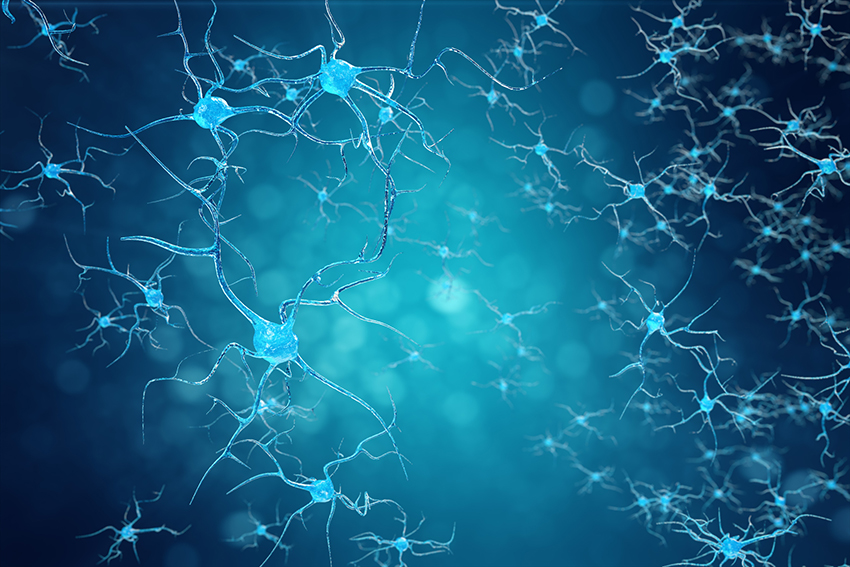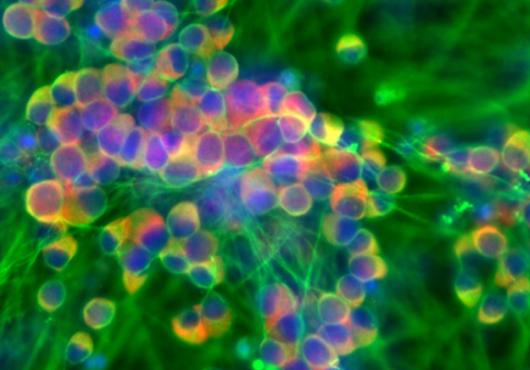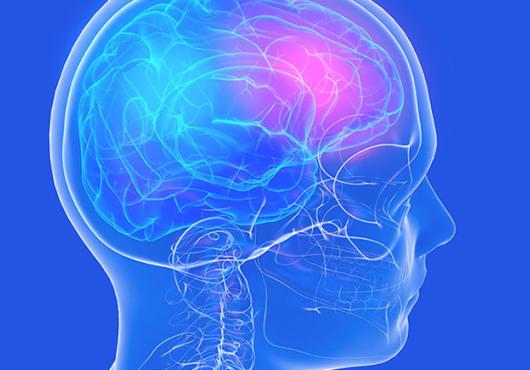
Every day, we experience a variety of sensations, both pleasant and unpleasant: a hug from a loved one, a warm shower, a mosquito bite, a hot pan.
But why does a pinprick feel painful when a gentle breeze feels so good?
Studies have yielded rich information about the myriad nerve cells, called sensory neurons, that specialize in detecting various signals. Research has also mapped how these neurons then connect to the spinal cord to carry the signals they receive from the outside world. Yet how do these signals travel from the spinal cord to the brain, and how does the brain “interpret” those messages? The answers to these questions have thus far remained elusive.
Now, research by neurobiologists in the Blavatnik Institute at Harvard Medical School conducted in mice suggests that to get to the brain, different types of signals pass through two largely separate populations of spinal projection neurons that broadcast information to the brain’s emotional centers for interpretation.
The findings, published in Nature, illuminate a surprising degree of specialization in how signals get processed and perceived. The results can help inform possible treatments for conditions in which normally pleasant or neutral sensations are interpreted as unpleasant or downright painful, such as neuropathic pain disorders or autism spectrum disorders.
To better understand how signals from the primary sensory neurons in the skin make their way to the brain, David Ginty, the Edward R. and Anne G. Lefler Professor of Neurobiology, Seungwon Sebastian Choi, research fellow in neurobiology, and their colleagues at HMS used new genetic tools to distinguish different types of spinal projection neurons in the so-called anterolateral pathway, which ferries sensory signals from the spinal cord to the brain.
Although researchers have long known that neurons marked with a receptor called TACR1 make up a hefty portion of this ascending pathway, their search turned up a second population of neurons marked by the presence of a receptor called GPR83.
More surprisingly still, the two pathways were largely distinct—about 57 percent of the anterolateral pathway neurons were TACR1 positive, while 45 percent were GPR83 positive, with a slim crossover between the two.
Experiments with additional genetic tools showed that although both neurons stretched from the spinal cord to a region of the brain stem called the lateral parabrachial nucleus, the TACR1 and GPR83 neurons ended in different subzones.
When Choi and Ginty strongly stimulated each of these neuron types separately in mice, they evoked different “escape” behaviors that rodents typically use to avoid pain—stimulating TACR1 neurons led the animals to jump and retreat backward, while stimulating GPR83 caused them to run forward. These results suggest that these two neuronal populations are processing different types of sensory signals.
Sure enough, when the researchers modeled different types of sensory inputs using a patch of skin attached to a spinal cord, they found that the GPR83 neurons were more sensitive to mechanical stimuli such as touch, whereas the TACR1 neurons were more responsive to thermal stimuli such as cool temperatures. Both neuron types reacted to noxious or painful stimuli. When the researchers exposed mice to uncomfortable sensations, such as floors that were uncomfortably cold, hot or rough, the rodents showed stress behaviors such as excessive paw licking. Blocking the activity of both GPR83 and TACR1 lessened these behaviors, but blocking either neuron type alone didn’t—a finding which suggests that each can independently transmit pain signals.
Further experiments showed that GPR83 neurons appeared to send their signals to the lateral parabrachial nucleus and then beyond into the brain’s emotional centers, which suggests that these particular neurons may play a special role in associating good or bad feelings with sensations. To test this idea, the team performed an experiment in which either the GPR83 or the TACR1 neurons were stimulated when mice pressed a lever. With low-level stimulation of GPR83, but not TACR1, the animals pressed the lever more and more, suggesting that they found this stimulation pleasant and rewarding. But with moderate-level stimulation of either neuronal type, the animals pressed the lever less over time—suggesting that some types of stimulation can be pleasant or painful, depending on intensity.
Together, Ginty and Choi say, these findings suggest that different types of sensory stimuli are routed and processed separately as they travel from the spinal cord to the brain, with affective touch signals being conveyed from the spinal cord to the lateral parabrachial nucleus via GPR83 neurons. They add that in some conditions, such as neuropathic pain or autism spectrum disorders, these pathways may be disrupted, causing the brain to misinterpret whether sensations are good, bad or neutral.
“Gaining knowledge about these pathways and the signals they convey could allow us to begin to understand what might go awry in these conditions,” Ginty said. “Eventually, it may be possible to alter their activity with a drug, changing how unpleasant sensations are perceived.”
Other researchers who participated in this study include Matthew Brett, Alexandra Magee, Noor-ul-Aine Iqbal, Dawei Zhang, Michelle DeLisle, Rachel Wolfson, Ling Bai, and Celine Santiago.
The work was supported by the Alice and Joseph E. Brooks Fund, Blavatnik Biomedical Accelerator Fund, National Institutes of Health (grants NS097344, AT011447, AR063772, NS096705 and NS111643), Bertarelli Foundation, Hock E. Tan and K. Lisa Yang Center for Autism Research at Harvard University and the Edward R. and Anne G. Lefler Center for the Study of Neurodegenerative Disorders. David Ginty is an investigator of the Howard Hughes Medical Institute.





